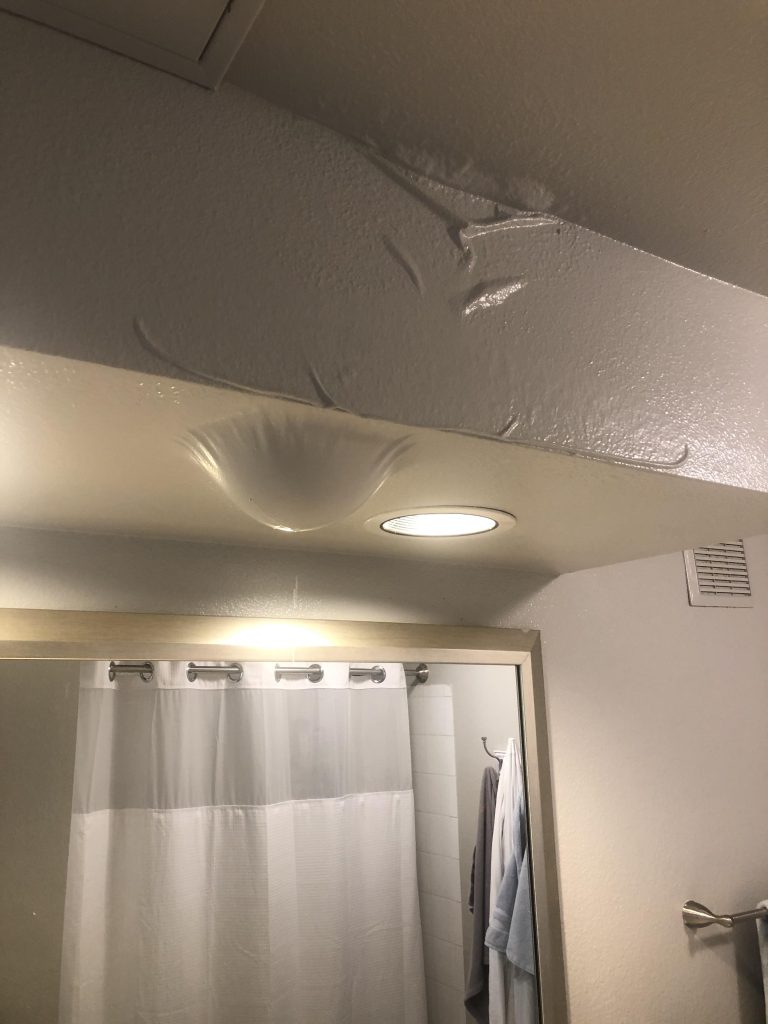Water damage can lead to various issues in your home, and discovering a bubble in the ceiling is one of them. In this comprehensive guide, we’ll explore the causes behind a bubble in the ceiling from water, its implications, and the steps you can take to address and prevent further damage.

Introduction
A bubble forming in your ceiling due to water damage is not only unsightly but also indicative of potential structural issues. Understanding the root causes and knowing how to tackle the problem head-on is crucial for maintaining the integrity of your home.
Causes of a Bubble in Ceiling From Water
The appearance of a bubble in your ceiling can be attributed to several factors. Common causes include roof leaks, burst pipes, plumbing issues, or even condensation buildup. Identifying the source is essential for effective and lasting solutions.
Implications of a Bubble in Ceiling From Water
Ignoring a bubble in the ceiling can lead to more significant problems. Apart from being an eyesore, it may indicate hidden mold growth, compromised structural integrity, and potential health hazards. Addressing the issue promptly is key to mitigating these consequences.
Read too: Elevate Your Space: A Step-by-Step Guide to Installing Tongue and Groove Ceiling Panels
Identifying the Issue: Bubble In Ceiling From Water
1. Visual Inspection
Perform a thorough visual inspection of the affected area. Look for water stains, discoloration, or sagging in the ceiling. These signs can help pinpoint the location of the water damage.
2. Press Test
Gently press on the bubble to assess its firmness. A soft and spongy feel indicates the presence of water. Be cautious not to puncture the bubble, as this can worsen the damage.
3. Tracing the Source
Trace the source of the water. Check for leaks in the roof, plumbing lines, or areas with poor ventilation. Identifying and addressing the root cause is crucial for preventing recurrence.
Dealing with a Bubble in Ceiling From Water: Step-by-Step Guide
1. Safety First
Before attempting any repairs, ensure safety. Turn off electricity to the affected area to avoid electrical hazards. If the bubble is large or shows signs of instability, evacuate the area and seek professional assistance.
2. Drain the Bubble
For small bubbles, carefully drain the water using a syringe or small puncture. This should be done cautiously to avoid further damage. For larger bubbles or extensive damage, consult with a professional.
3. Dry the Area*
After draining, thoroughly dry the affected area using fans or a dehumidifier. Ensuring complete dryness is crucial for preventing mold growth and further damage.
4. Repair the Source*
Address the root cause of the water damage. Whether it’s fixing a leaky roof, repairing a burst pipe, or improving ventilation, resolving the underlying issue is essential for long-term solutions.
Preventing Future Bubbles in Ceiling From Water
1. Regular Inspections
Schedule regular inspections of your roof, ceilings, and plumbing to catch potential issues early on.
2. Maintain Proper Ventilation
Ensure proper ventilation in your home to minimize condensation buildup, a common cause of water damage.
3. Prompt Repairs
Address any leaks or plumbing issues promptly to prevent water damage from escalating.
Conclusion
A bubble in the ceiling from water damage is a warning sign that should not be ignored. By understanding the causes, identifying the issue promptly, and taking decisive action, you can protect your home from further damage. Regular maintenance and proactive measures are key to preventing future bubbles and maintaining a safe and healthy living environment.